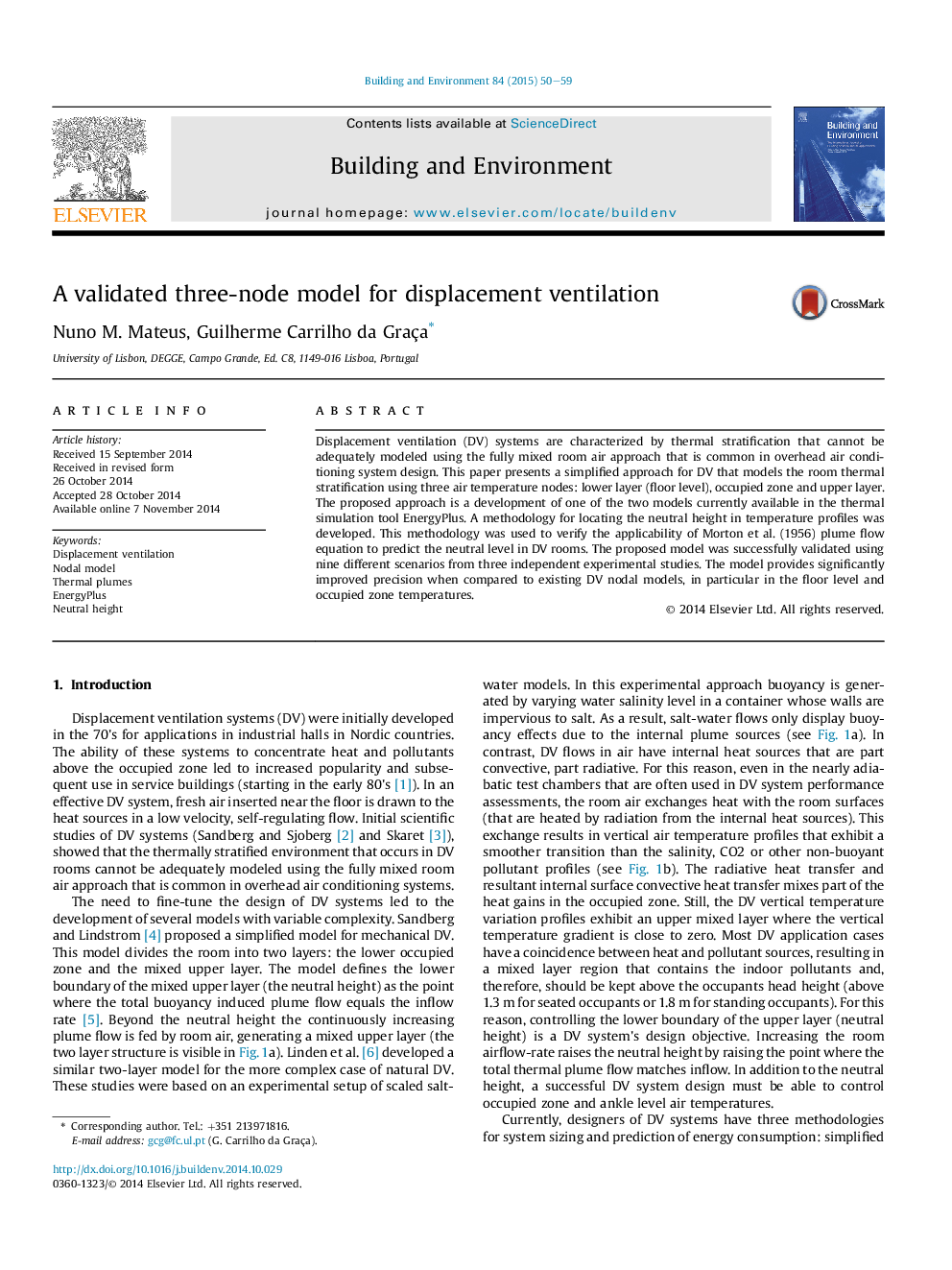| Article ID | Journal | Published Year | Pages | File Type |
|---|---|---|---|---|
| 247976 | Building and Environment | 2015 | 10 Pages |
•A simplified three-node model for displacement ventilation was developed.•The model is validated using three independent experimental studies.•The results show good model precision: average error of 0.3 K.•A quantitative methodology for locating the neutral height in thermal profiles was developed.•The applicability of Taylor's plume flow equation to characterize plumes resulting from real heat gains was verified.
Displacement ventilation (DV) systems are characterized by thermal stratification that cannot be adequately modeled using the fully mixed room air approach that is common in overhead air conditioning system design. This paper presents a simplified approach for DV that models the room thermal stratification using three air temperature nodes: lower layer (floor level), occupied zone and upper layer. The proposed approach is a development of one of the two models currently available in the thermal simulation tool EnergyPlus. A methodology for locating the neutral height in temperature profiles was developed. This methodology was used to verify the applicability of Morton et al. (1956) plume flow equation to predict the neutral level in DV rooms. The proposed model was successfully validated using nine different scenarios from three independent experimental studies. The model provides significantly improved precision when compared to existing DV nodal models, in particular in the floor level and occupied zone temperatures.
Graphical abstractFigure optionsDownload full-size imageDownload as PowerPoint slide
